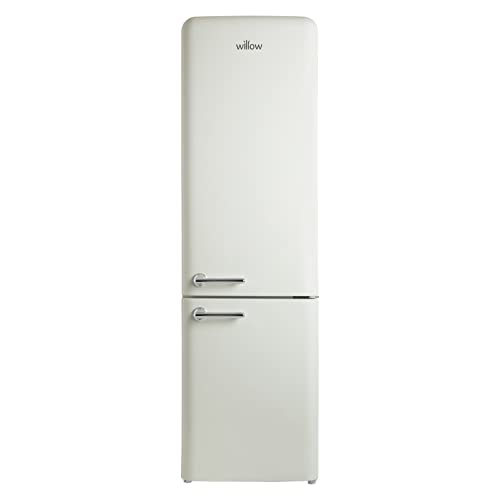
Fridge Freezer In Uk
Add a review FollowOverview
-
Founded Date February 16, 1972
-
Sectors Telecom
-
Posted Jobs 0
-
Viewed 30
Company Description
12 Stats About Fridge UK To Get You Thinking About The Water Cooler
The Comprehensive Guide to Refrigerators in the UK
Refrigerators are a necessary appliance in every family, serving an essential role in food preservation and safety. The UK market offers a varied range of fridge types, sizes, functions, and brands. This post intends to offer an extensive understanding of refrigerators offered in the UK, including their features, energy effectiveness, and elements to think about when buying.
Types of Refrigerators Available in the UK
When trying to find a refrigerator, it is essential to understand the different types available. Each type features its own set of functions and functions, dealing with different needs and choices. The most typical kinds of fridges found in the Refridgerators uk consist of:
1. Leading Freezer Refrigerators
- Description: The standard style, including the freezer compartment on top.
- Pros: More budget friendly, large, easy access to fresh food.
- Cons: Limited freezer space, the top might be less practical for bulk products.
2. Bottom Freezer Refrigerators
- Description: Freezer is located at the bottom, enabling easier access to fresh food.
- Pros: Greater benefit, better visibility of fresh products.
- Cons: Usually more costly, some might battle with large frozen items.
3. Side-by-Side Refrigerators
- Description: Features two vertical compartments, one for the fridge and one for the freezer.
- Pros: Ample storage space, simple to gain access to both frozen and fresh foods.
- Cons: Wider footprint, they may not fit in smaller sized kitchen areas.
4. French Door Refrigerators
- Description: Combines features of bottom freezers and side-by-sides, with two doors for the fridge on top.
- Pros: Stylish style, large, and frequently includes sophisticated functions.
- Cons: Higher rate point, lines up inadequately with smaller cooking area designs.
5. Compact Refrigerators
- Description: Smaller models designed for minimal spaces.
- Pros: Ideal for small apartments or workplaces, energy-efficient.
- Cons: Limited storage capacity, may do not have functions.
6. Integrated Refrigerators
- Description: Designed to mix seamlessly with kitchen area cabinetry.
- Pros: Custom fit, aesthetic appeal, increases home worth.
- Cons: Higher cost, might offer less flexibility in placement.
7. Smart Refrigerators
- Description: Equipped with Wi-Fi and wise technology functions.
- Pros: Advanced includes like touch screens and internal video cameras.
- Cons: Expensive, more complicated to fix.
| Refrigerator Type | Availability | Average Price Range | Energy Efficiency |
|---|---|---|---|
| Leading Freezer | Moderate | ₤ 300 – ₤ 600 | Typical |
| Bottom Freezer | High | ₤ 400 – ₤ 800 | Above Average |
| Side-by-Side | Easy | ₤ 800 – ₤ 1500 | Varies |
| French Door | High | ₤ 800 – ₤ 2000 | High |
| Compact | Minimal | ₤ 200 – ₤ 500 | Typical |
| Integrated | Custom | ₤ 1000 – ₤ 2500 | High |
| Smart | Variable | ₤ 1200+ | High |
Secret Features to Consider
- Energy Efficiency: Look for models that are energy-efficient. In the UK, appliances are rated from A (most effective) to G (least effective). An A+ rating and above can lead to significant energy cost savings.
- Capability: Choose a fridge with adequate capacity for your household. A basic guideline is 100-200 liters per person.
- Sound Level: Consider designs that operate silently, specifically if the kitchen area is near living spaces.
- Cooling Technology: Features like frost-free technology are worth the financial investment, as they reduce upkeep.
- Adjustable Shelves: Having adjustable shelves boosts the versatility to save bigger items.
- Temperature Control: Check for easy-to-use temperature level controls and zones for different kinds of food.
- Design: Choose the design and color that matches your kitchen area aesthetic, whether you prefer a modern stainless-steel appearance or a traditional retro finish.
Buying Tips
- Determine Your Needs: Consider your cooking habits, family size, and cooking area space.
- Set a Budget: Refrigerators can be found in various price ranges. Develop a budget before you start going shopping.
- Research Study Energy Ratings: Invest in energy-efficient models to minimize energy costs.
- Read Reviews: User experiences can provide insights into reliability and efficiency.
- Compare Brands: Some brand names are understood for their sturdiness while others might use more innovative functions.
Frequently Asked Questions (FAQs)
1. The length of time do refrigerators usually last?
- Refrigerators typically last between 10 to 20 years, depending upon the brand name and how well they are kept.
2. Are there any upkeep tips for lengthening the life of a refrigerator?
- Frequently tidy the coils, check the door seals, and occasionally defrost if necessary to keep optimum performance.
3. What is the best size refrigerator for a family of 4?
- For a household of 4, a refrigerator with a capability of around 400-600 liters is typically adequate.
4. Do I require to stress about energy consumption when purchasing a refrigerator?
- Yes, energy consumption is crucial. Search for systems with high energy efficiency scores to minimize month-to-month costs.
5. Should I pick a fridge with a water and ice dispenser?
- This function can be convenient, specifically for households. Nevertheless, it may require more upkeep than basic designs.
Buying a refrigerator is a significant decision for any household in the UK. With different types available, each with its distinct features and benefits, it is vital to evaluate specific needs before choosing. By considering aspects such as energy performance, capability, and style visual appeals, consumers can choose a fridge that lines up well with their lifestyle, eventually enhancing their kitchen experience while securing food quality and freshness.


